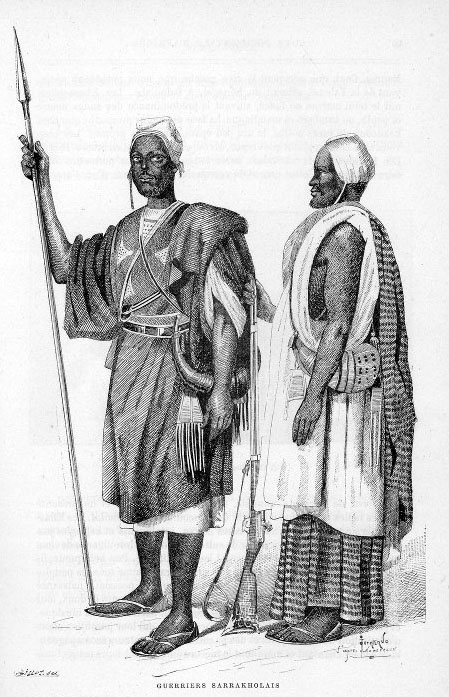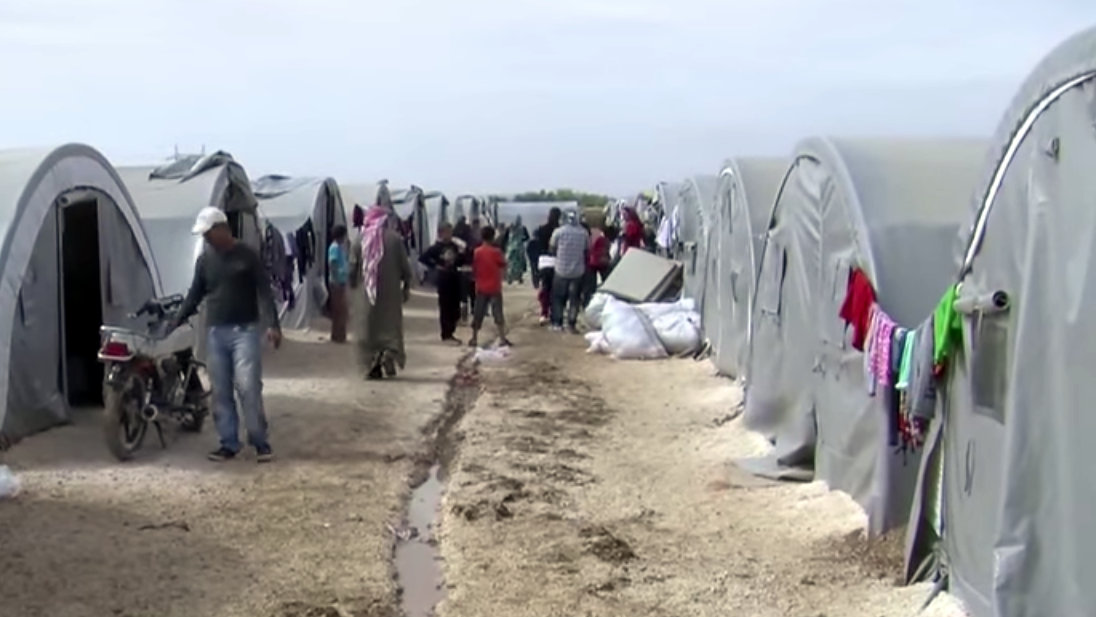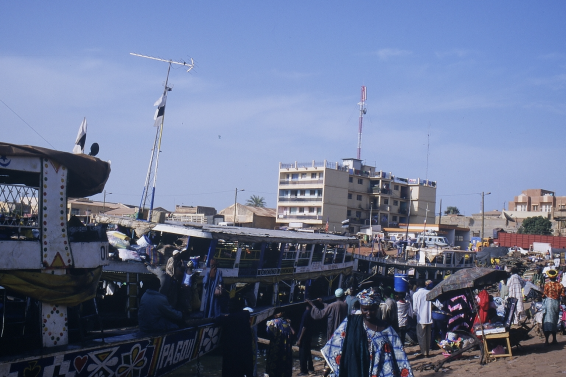|
Soninke People
The Soninke (Sarakolleh) people are a West African Mande languages, Mande-speaking ethnic group found in Mali, southern Mauritania, eastern Senegal, The Gambia, and Guinea (especially Fouta Djallon). They speak the Soninke language, also called the Serakhulle or Azer language, which is one of the Mande languages. Soninke people were the founders of the ancient Ghana Empire, empire of Ghana or Wagadou c. 200–1240 CE, Subgroups of Soninke include the Jakhanke, Maraka and Soninke Wangara, Wangara. When the Ghana empire was destroyed, the resulting diaspora brought Soninkes to Mali, Mauritania, Senegal, Gambia, Burkina Faso, Côte d'Ivoire, Guinée-Conakry, modern-day Republic of Ghana, Kano in Nigeria, and Guinea-Bissau where some of this trading diaspora was called Wangara, leading to the saying “when Americans landed on the moon, a Soninke was already there” in Senegal, with other versions across West Africa. Predominantly Muslims, the Soninke were one of the early ethnic gr ... [...More Info...] [...Related Items...] OR: [Wikipedia] [Google] [Baidu] |
Soninke Language
The Soninke language (Soninke: ''Sooninkanxanne'', ), also known as Serakhulle or Azer or Maraka, is a Mande languages, Mande language spoken by the Soninke people of West Africa. The language has an estimated 2.3 million speakers, primarily located in Mali and Mauritania, and also (in order of numerical importance of the communities) in Senegal, Ivory Coast, The Gambia, Guinea-Bissau, and Guinea. It enjoys the status of a national language in Mauritania, Mali, Senegal and The Gambia. Phonology Consonants Vowels Long vowels are written double: ''aa'', ''ee'', ''ii'', ''oo'', ''uu''. Dialects Dialects of Soninke include the Berber languages, Berber-inflected Azer dialect. References External links PanAfriL10n page on Soninke [...More Info...] [...Related Items...] OR: [Wikipedia] [Google] [Baidu] |
Diaspora
A diaspora ( ) is a population that is scattered across regions which are separate from its geographic place of birth, place of origin. The word is used in reference to people who identify with a specific geographic location, but currently reside elsewhere. Notable diasporic populations include the Jewish Diaspora formed after the Babylonian exile; Assyrian diaspora following the Sayfo, Assyrian genocide; Greeks that fled or were displaced following the fall of Constantinople and the later Greek genocide as well as the Istanbul pogroms; the emigration of Anglo-Saxons (primarily to the Byzantine Empire) after the Norman Conquest, Norman Conquest of England; the Chinese people, southern Chinese and South Asian diaspora, South Asians who left their homelands during the 19th and 20th centuries; the Irish diaspora after the Great Famine (Ireland), Great Famine; the Scottish diaspora that developed on a large scale after the Highland Clearances, Highland and Lowland Clearances; Romani ... [...More Info...] [...Related Items...] OR: [Wikipedia] [Google] [Baidu] |
Hausaland
Hausa Kingdoms, also known as Hausa Kingdom or Hausaland, was a collection of states ruled by the Hausa people, before the Fulani jihads. It was situated between the Niger River and Lake Chad (modern day northern Nigeria). Hausaland lay between the Western Sudanic kingdoms of Ancient Ghana, Mali and Songhai and the Eastern Sudanic kingdoms of Kanem-Bornu. Hausaland took shape as a political and cultural region during the first millennium CE as a result of the westward expansion of Hausa peoples. They arrived in Hausaland when the terrain was converting from woodlands to savannah. They started cultivating grains, which led to a denser peasant population. They had a common language, laws and customs. The Hausa were known for fishing, hunting, agriculture, salt-mining, and blacksmithing. By the 14th century, Katsina had become the most powerful city-state. Katsina was the base for the trans-Saharan trade in salt, cloth, leather, and grain. The Hausa oral history is reflected in ... [...More Info...] [...Related Items...] OR: [Wikipedia] [Google] [Baidu] |
Mopti
Mopti (Fulfulde: Mobti) is a town and an urban commune in the Inner Niger Delta region of Mali. The town is the capital of the Mopti Cercle and the Mopti Region. Situated 630 km northeast of Bamako, the town lies at the confluence of the Niger and the Bani Rivers and is linked by an elevated causeway to the town of Sévaré. The urban commune, which includes both Mopti and Sévaré, had a population of 114,296 in the 2009 census. Geography Mopti lies on the right bank of the Bani River, a few hundred meters upstream of the confluence of the Bani with the Niger River. Between August and December when the rivers flood the Inner Niger Delta, the town becomes a series of islands connected by raised causeways. During this period the only road access to the town is along a 12 km causeway that links Mopti to Sévaré. Mopti lies to the west of the Dogon Plateau and is 66 km northwest of Bandiagara and 76 km north-northeast of Djenné. The town is the capital ... [...More Info...] [...Related Items...] OR: [Wikipedia] [Google] [Baidu] |
Ségou
Ségou (; , ) is a town and an Communes of Mali, urban commune in south-central Mali that lies northeast of Bamako on the right bank of the River Niger. The town is the capital of the Ségou Cercle and the Ségou Region. With 130,690 inhabitants in 2009, it is the fifth-largest town in Mali. In the middle of the 19th century there were four villages with the name of Ségou spread out over a distance of around along the right bank of the river. They were, starting from the most upstream, Ségou-Koro (Old Ségou), Ségou-Bougou, Ségou-Koura (New Ségou) and Ségou-Sikoro. The present town is on the site of Ségou-Sikoro. History Origin Ségou has contested origins. Some claim that the word Ségou come from "Sikoro", meaning to the foot of a Vitellaria, shea butter tree. Others argue that it was named after Cheikou, a marabout who founded the city, while still other theories support the claim that Ségou was founded by the Bozo fishermen coming from the north in the 4th century ... [...More Info...] [...Related Items...] OR: [Wikipedia] [Google] [Baidu] |
Sikasso
Sikasso ( Bambara: ߛߌߞߊߛߏ tr. Sikaso) is a city in the south of Mali and the capital of the Sikasso Cercle and the Sikasso Region. It is Mali's second largest city with 225,753 residents in the 2009 census. History Sikasso was a small village until 1870, when Tieba Traoré, whose mother came from Sikasso, became ''Faama'' of the Kénédougou Kingdom and moved the capital there. He established his palace on the sacred Mamelon hill (now home to a water tower) and constructed a massive tata to defend against the attacks of both the Malinke conqueror Samori Ture and the French colonial army. This made Sikasso the largest fortified city ever built in west Africa. Sikasso withstood a 15-month siege by Ture from 1887 to 1888 before the French, allies of Kenedougou against Ture, relieved the city. Despite this, the French contrived a diplomatic crisis to attack in 1898. They began a major artillery barrage against the tata on April 15th 1898, and the city fell on May ... [...More Info...] [...Related Items...] OR: [Wikipedia] [Google] [Baidu] |
Koulikoro
Koulikoro ( Bambara: ߞߎߟߌߞߏߙߏ tr. Kulikoro) is a town and urban commune in Mali Mali, officially the Republic of Mali, is a landlocked country in West Africa. It is the List of African countries by area, eighth-largest country in Africa, with an area of over . The country is bordered to the north by Algeria, to the east b .... The capital of the Koulikoro Region, Koulikoro is located on banks of the Niger River, downstream from Mali's capital Bamako. Koulikoro is the terminus of the Dakar-Niger Railway which was completed in 1904. Between August and November, at the end of the rainy season, goods are transported down the Niger River to Ségou, Mopti, Timbuktu, Tombouctou and Gao. Navigation is not possible upstream of Koulikoro because of the Sotuba Rapids near Bamako. Koulikoro is also the location of a prison. The Koulikoro prison is noteworthy for housing a number of former Rwandan officers found guilty of having taken part in the Rwandan genocide. Gallery Ko ... [...More Info...] [...Related Items...] OR: [Wikipedia] [Google] [Baidu] |
Kayes
Kayes ( Bambara: ߞߊߦߌ tr. ''Kayi'', Soninké: ''Xaayi'') is a city in western Mali on the Sénégal River with a population of 127,368 at the 2009 census. Kayes is the capital of the administrative region of the same name. The city is located northwest of the capital Bamako. Toponymy There are multiple possible etymologies of the name 'Kayes', all derived from the Soninke language. These include: the word "kharré", which describes a low humid place that floods in rainy season; the word 'kayé', a type of grass; 'khayé', the Soninke name for the rhun palm. History The area around Kayes was historically a part of the Soninke states of Diarra and Gajaaga. The important trading center of Goundiourou, known in Arabic sources as Ghiyaru, was just across the river, and was later rebuilt just south of the modern city.Charles Monteil ‘Le Site de Goundiourou’, Bulletin du Comité d'études historiques et scientifiques de l'Afrique occidentale française, Larose (Paris) ... [...More Info...] [...Related Items...] OR: [Wikipedia] [Google] [Baidu] |
Bibliothèque Nationale De France
The (; BnF) is the national library of France, located in Paris on two main sites, ''Richelieu'' and ''François-Mitterrand''. It is the national repository of all that is published in France. Some of its extensive collections, including books and manuscripts but also precious objects and artworks, are on display at the BnF Museum (formerly known as the ) on the Richelieu site. The National Library of France is a public establishment under the supervision of the Ministry of Culture. Its mission is to constitute collections, especially the copies of works published in France that must, by law, be deposited there, conserve them, and make them available to the public. It produces a reference catalogue, cooperates with other national and international establishments, as well as participates in research programs. History The National Library of France traces its origin to the royal library founded at the Louvre Palace by Charles V in 1368. Charles had received a collection o ... [...More Info...] [...Related Items...] OR: [Wikipedia] [Google] [Baidu] |
Imraguen People
The Imraguen, or Imeraguen (Berber: Imragen), are an ethnic group or tribe of Mauritania and Western Sahara. They were estimated at around 5,000 individuals in the 1970s. Most members of the group live in fishing villages in the Banc d'Arguin National Park, located on the Atlantic coast of Mauritania. History The name ''Imraguen'' ( Berber orthography: ''imragen'') is a Berber word meaning "fishermen", or «people who fish while walking on the sea»,Fishermen who "walk on water" burn their nets ''Panda.org'', 5 May 2004 or «those who harvest life». ''Webislam.com'', 17 June 2006 The Imraguen are b ... [...More Info...] [...Related Items...] OR: [Wikipedia] [Google] [Baidu] |
Islam
Islam is an Abrahamic religions, Abrahamic monotheistic religion based on the Quran, and the teachings of Muhammad. Adherents of Islam are called Muslims, who are estimated to number Islam by country, 2 billion worldwide and are the world's Major religious groups, second-largest religious population after Christians. Muslims believe that Islam is the complete and universal version of a Fitra, primordial faith that was revealed many times through earlier Prophets and messengers in Islam, prophets and messengers, including Adam in Islam, Adam, Noah in Islam, Noah, Abraham in Islam, Abraham, Moses in Islam, Moses, and Jesus in Islam, Jesus. Muslims consider the Quran to be the verbatim word of God in Islam, God and the unaltered, final revelation. Alongside the Quran, Muslims also believe in previous Islamic holy books, revelations, such as the Torah in Islam, Tawrat (the Torah), the Zabur (Psalms), and the Gospel in Islam, Injil (Gospel). They believe that Muhammad in Islam ... [...More Info...] [...Related Items...] OR: [Wikipedia] [Google] [Baidu] |







